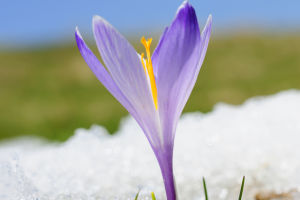When it comes to mushrooms, vibrant colors often suggest danger. While many mushrooms can be a delicious addition to meals, others can pose serious health risks.
A common belief is that the brighter the mushroom, the more toxic it is. But is this rule of thumb reliable? Let's Find Out Lykkers!
Why Are Some Mushrooms So Colorful?
Attracting Attention for Survival: Just like some brightly colored animals use their looks to warn predators, certain mushrooms use vibrant colors as a form of self-defense. This phenomenon, known as aposematism, sends a signal to animals that says, "Stay away,Dangerous!"
The Role of Pigments: The bright colors in mushrooms come from natural pigments. In some cases, these pigments are linked to toxins produced by the fungi. For example, the infamous Amanita muscaria, with its striking red cap and white spots, contains potent toxins that can cause hallucinations and serious illness if consumed.
The Myth of Color Equals Poison
Not All Bright Mushrooms Are Toxic: While many vividly colored mushrooms are indeed toxic, not all are dangerous. Some harmless mushrooms also sport bright colors. Conversely, some of the most toxic mushrooms can appear quite dull. For example, the Amanita phalloides, also known as the "Death Cap," is responsible for the majority of mushroom poisoning deaths worldwide, yet it looks rather plain with its greenish cap.
Identification Is Key: Because there is no foolproof way to determine a mushroom's toxicity by color alone, mushroom foraging is an activity that should only be undertaken by those with proper training and experience. Misidentification can lead to severe poisoning or even death.
Common Poisonous Mushrooms to Watch Out For
Amanita Phalloides (Death Cap): As mentioned earlier, this is one of the most deadly mushrooms and has a rather unremarkable appearance. Consuming even a small amount can be lethal due to its potent toxins, which target the liver and kidneys.
Amanita Muscaria (Fly Agaric): Recognized by its bright red cap with white spots, this mushroom is famous for its hallucinogenic properties. While it is less deadly than the Death Cap, it can still cause severe symptoms like vomiting, confusion, and hallucinations.
Galerina Marginata (Deadly Galerina): With its small, brownish appearance, this mushroom is easy to mistake for edible varieties. However, it contains the same deadly toxins as the Death Cap, making it highly dangerous.
Safe Foraging Practices
Learn from Experts: If you’re interested in foraging for mushrooms, always seek guidance from experienced mycologists or foragers. They can teach you how to properly identify edible and toxic varieties.
Avoid Touching or Eating Unknown Mushrooms: If you come across a mushroom that you cannot positively identify as safe, it’s best to leave it alone. Some toxins can even be absorbed through the skin.
While there is some truth to the idea that the prettiest mushrooms can be the most poisonous, it's not a rule to rely on. The world of mushrooms is incredibly diverse, with toxins and edibility varying widely among species. Bright colors can serve as a warning, but they can also be misleading. The key to safe mushroom foraging lies in proper education and identification, rather than relying on simple visual cues like color.


